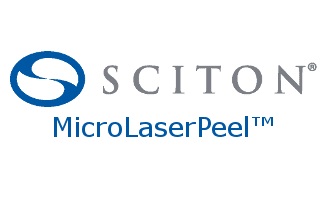MicroLaserPeel
Clear, even-toned skin can be hard to come by and even harder to maintain. Our skin can be subject to many different spots and blemishes due to damage and aging, and when the problem areas are rooted deep down, they can seem impossible to remove. A MicroLaserPeel treatment can precisely remove the blemished layers of skin needed in a quick, easy procedure.
What is MicroLaserPeel?
This laser technology works by vaporizing each individual layer of skin, with the depth depending on the areas being treated. The system is highly-precise and customized to fit your skin and anatomy through a computer-guided procedure— meaning your problem areas can be treated at exactly the depth required, unlike chemical peels which can be less accurate. Things like wrinkles, scars, spots, acne, and sun damage can be easily treated with a MicroLaserPeel.
Who is a candidate for MicroLaserPeel?
Those with a busy schedule who want the best possible results can benefit greatly from MicroLaserPeel treatments versus a chemical peel or microdermabrasion procedure. This treatment can be used on most areas of the skin but is most popular on the face and neck.
What happens during the procedure?
Before the procedure, a topical anesthetic might be applied for optimal comfort, depending on the depth of the peel. Most light peels don’t require it. Your eyes will also be protected from the laser light with safety shields so that your vision is not damaged. As the laser is applied to the skin, it vaporizes the skin layer which is made up of mostly water. This allows a new layer of skin to grow back that is smooth, youthful, and blemish-free. Because the laser technology is so precise, it carries a minimal risk of scarring versus other similar procedures.
Results and Recovery
Immediately after the procedure, the skin will feel dry and flaky and will begin to peel off over the next few days. It may also feel similar to sunburn and appear red and irritated. The area is mostly healed within three to four days, provided that any aftercare instructions given by Dr. Richardson are followed. You may be given some skin care products to keep the area moisturized and protected. As with a chemical peel or microdermabrasion, the skin is sensitive to sunlight afterward, so be sure and avoid any direct sunlight. This will ensure you get best results in tone and pigmentation as the new skin grows in.
You may require multiple treatments, depending on the problem areas. Dr. Richardson can help you establish a treatment plan with MicroLaserPeel if needed. If you have questions about this procedure and would like to schedule a consultation with Dr. Richardson, contact our office.





 (228) 897-1400
(228) 897-1400



